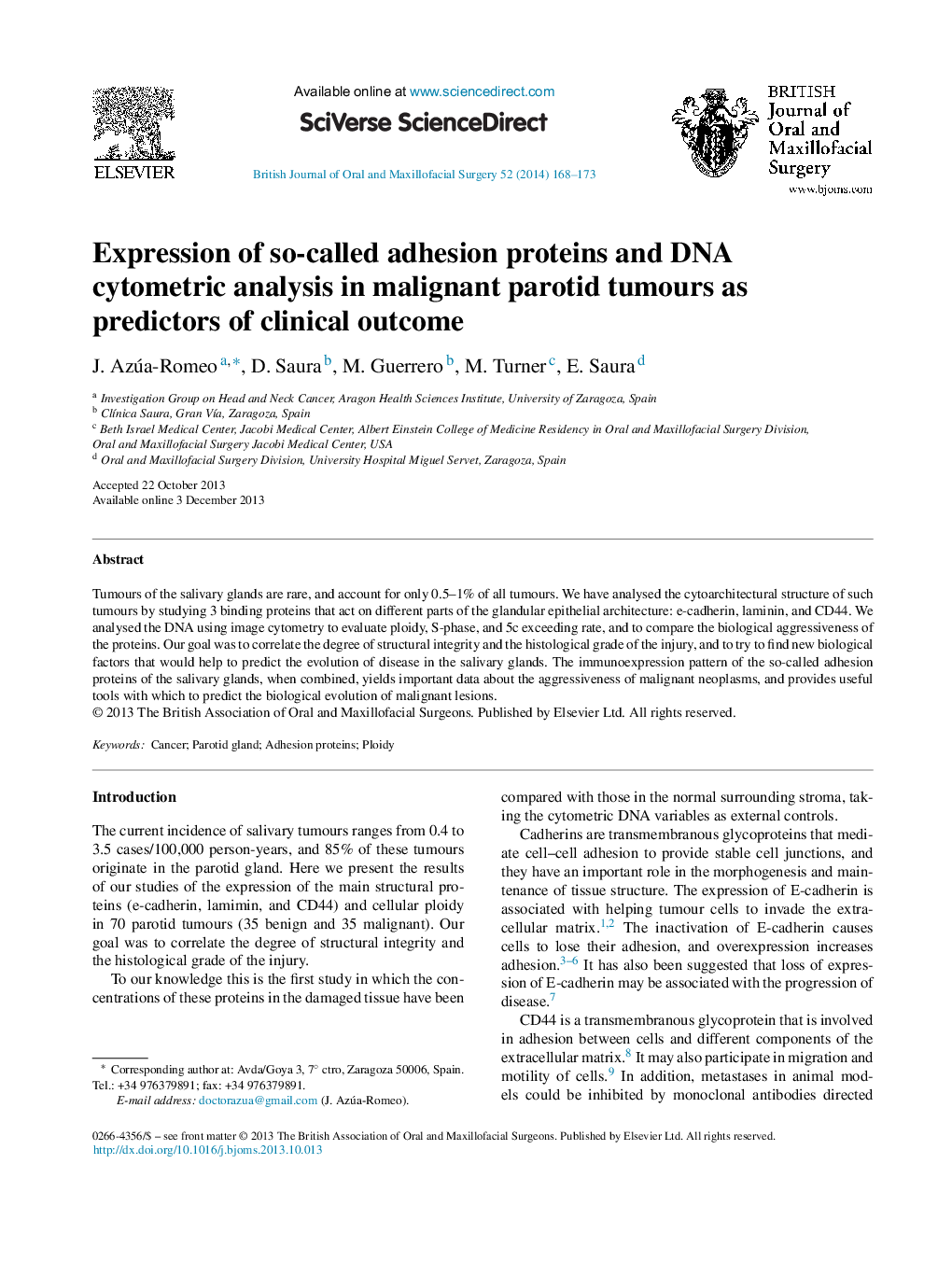| Article ID | Journal | Published Year | Pages | File Type |
|---|---|---|---|---|
| 3123928 | British Journal of Oral and Maxillofacial Surgery | 2014 | 6 Pages |
Tumours of the salivary glands are rare, and account for only 0.5–1% of all tumours. We have analysed the cytoarchitectural structure of such tumours by studying 3 binding proteins that act on different parts of the glandular epithelial architecture: e-cadherin, laminin, and CD44. We analysed the DNA using image cytometry to evaluate ploidy, S-phase, and 5c exceeding rate, and to compare the biological aggressiveness of the proteins. Our goal was to correlate the degree of structural integrity and the histological grade of the injury, and to try to find new biological factors that would help to predict the evolution of disease in the salivary glands. The immunoexpression pattern of the so-called adhesion proteins of the salivary glands, when combined, yields important data about the aggressiveness of malignant neoplasms, and provides useful tools with which to predict the biological evolution of malignant lesions.
